Many people ask why I became a theoretical physicist. The answer runs through philosophy—which I thought, for years, I’d left behind in college.
My formal relationship with philosophy originated with Mr. Bohrer. My high school classified him as a religion teacher, but he co-opted our junior-year religion course into a philosophy course. He introduced us to Plato’s cave, metaphysics, and the pursuit of the essence beneath the skin of appearance. The essence of reality overlaps with quantum theory and relativity, which fascinated him. Not that he understood them, he’d hasten to clarify. But he passed along that fascination to me. I’d always loved dealing in abstract ideas, so the notion of studying the nature of the universe attracted me. A friend and I joked about growing up to be philosophers and—on account of not being able to find jobs—living in cardboard boxes next to each other.
After graduating from high school, I searched for more of the same in Dartmouth College’s philosophy department. I began with two prerequisites for the philosophy major: Moral Philosophy and Informal Logic. I adored those courses, but I adored all my courses.
As a sophomore, I embarked upon Dartmouth’s philosophy-of-science course. I was one of the course’s youngest students, but the professor assured me that I’d accumulated enough background information in science and philosophy classes. Yet he and the older students threw around technical terms, such as qualia, that I’d never heard of. Those terms resurfaced in the assigned reading, again without definitions. I struggled to follow the conversation.
Meanwhile, I’d been cycling through the sciences. I’d taken my high school’s highest-level physics course, senior year—AP Physics C: Mechanics and Electromagnetism. So, upon enrolling in college, I made the rounds of biology, chemistry, and computer science. I cycled back to physics at the beginning of sophomore year, taking Modern Physics I in parallel with Informal Logic. The physics professor, Miles Blencowe, told me, “I want to see physics in your major.” I did, too, I assured him. But I wanted to see most subjects in my major.
Miles, together with department chair Jay Lawrence, helped me incorporate multiple subjects into a physics-centric program. The major, called “Physics Modified,” stood halfway between the physics major and the create-your-own major offered at some American liberal-arts colleges. The program began with heaps of prerequisite courses across multiple departments. Then, I chose upper-level physics courses, a math course, two history courses, and a philosophy course. I could scarcely believe that I’d planted myself in a physics department; although I’d loved physics since my first course in it, I loved all subjects, and nobody in my family did anything close to physics. But my major would provide a well-rounded view of the subject.
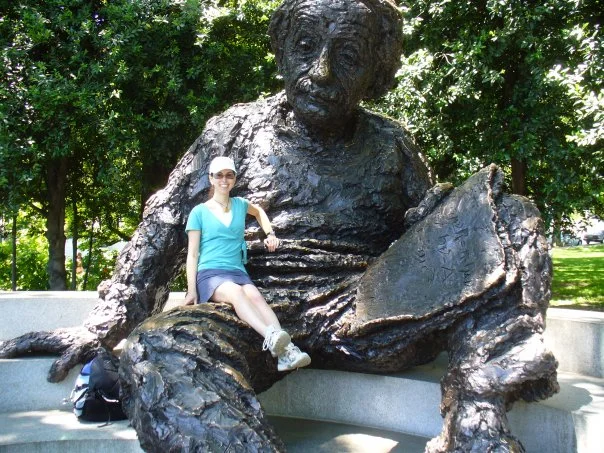
The major’s philosophy course was an independent study on quantum theory. In one project, I dissected the “EPR paper” published by Einstein, Podolsky, and Rosen (EPR) in 1935. It introduced the paradox that now underlies our understanding of entanglement. But who reads the EPR paper in physics courses nowadays? I appreciated having the space to grapple with the original text. Still, I wanted to understand the paper more deeply; the philosophy course pushed me toward upper-level physics classes.
What I thought of as my last chance at philosophy evaporated during my senior spring. I wanted to apply to graduate programs soon, but I hadn’t decided which subject to pursue. The philosophy and history of physics remained on the table. A history-of-physics course, taught by cosmologist Marcelo Gleiser, settled the matter. I worked my rear off in that course, and I learned loads—but I already knew some of the material from physics courses. Moreover, I knew the material more deeply than the level at which the course covered it. I couldn’t stand the thought of understanding the rest of physics only at this surface level. So I resolved to burrow into physics in graduate school.&
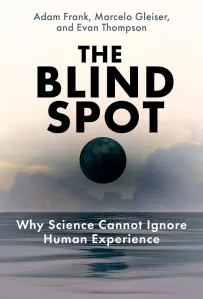
Burrow I did: after a stint in condensed-matter research, I submerged up to my eyeballs in quantum field theory and differential geometry at the Perimeter Scholars International master’s program. My research there bridged quantum information theory and quantum foundations. I appreciated the balance of fundamental thinking and possible applications to quantum-information-processing technologies. The rigorous mathematical style (lemma-theorem-corollary-lemma-theorem-corollary) appealed to my penchant for abstract thinking. Eating lunch with the Perimeter Institute’s quantum-foundations group, I felt at home.
Craving more research at the intersection of quantum thermodynamics and information theory, I enrolled at Caltech for my PhD. As I’d scarcely believed that I’d committed myself to my college’s physics department, I could scarcely believe that I was enrolling in a tech school. I was such a child of the liberal arts! But the liberal arts include the sciences, and I ended up wrapping Caltech’s hardcore vibe around myself like a favorite denim jacket.
Caltech kindled interests in condensed matter; atomic, molecular, and optical physics; and even high-energy physics. Theorists at Caltech thought not only abstractly, but also about physical platforms; so I started to, as well. I began collaborating with experimentalists as a postdoc, and I’m now working with as many labs as I can interface with at once. I’ve collaborated on experiments performed with superconducting qubits, photons, trapped ions, and jammed grains. Developing an abstract idea, then nursing it from mathematics to reality, satisfies me. I’m even trying to redirect quantum thermodynamics from foundational insights to practical applications.
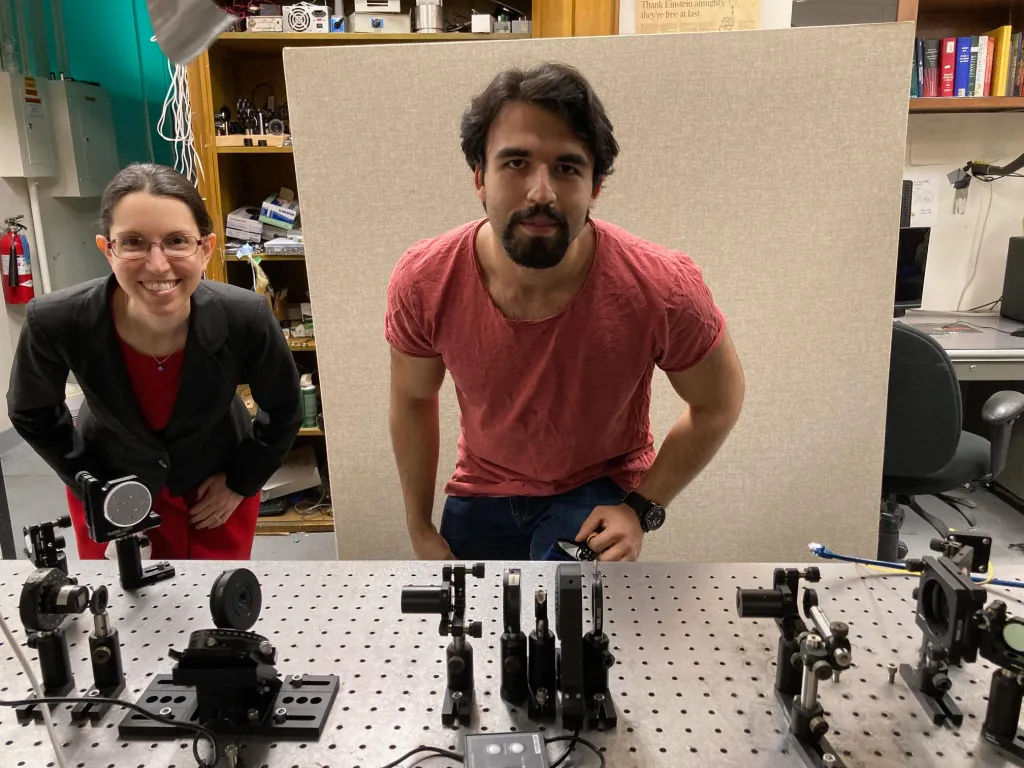
So I did a double-take upon receiving an invitation to present a named lecture at the University of Pittsburgh Center for Philosophy of Science. Even I, despite not being a philosopher, had heard of the cache of Pitt’s philosophy-of-science program. Why on Earth had I received the invitation? I felt the same incredulity as when I’d handed my heart to Dartmouth’s physics department and then to a tech school. But now, instead of laughing at the image of myself as a physicist, I couldn’t see past it.
Why had I received that invitation? I did a triple-take. At Perimeter, I’d begun undertaking research on resource theories—simple, information-theoretic models for situations in which constraints restrict the operations one can perform. Hardly anyone worked on resource theories then, although they form a popular field now. Philosophers like them, and I’ve worked with multiple classes of resource theories by now.
More recently, I’ve worked with contextuality, a feature that distinguishes quantum theory from classical theories. And I’ve even coauthored papers about closed timelike curves (CTCs), hypothetical worldlines that travel backward in time. CTCs are consistent with general relativity, but we don’t know whether they exist in reality. Regardless, one can simulate CTCs, using entanglement. Collaborators and I applied CTC simulations to metrology—to protocols for measuring quantities precisely. So we kept a foot in practicality and a foot in foundations.
Perhaps the idea of presenting a named lecture on the philosophy of science wasn’t hopelessly bonkers. All right, then. I’d present it.
This March, I presented an ALS Lecture (an Annual Lecture Series Lecture, redundantly) entitled “Field notes on the second law of quantum thermodynamics from a quantum physicist.” Scientists formulated the second law the early 1800s. It helps us understand why time appears to flow in only one direction. I described three enhancements of that understanding, which have grown from quantum thermodynamics and nonequilibrium statistical mechanics: resource-theory results, fluctuation theorems, and thermodynamic applications of entanglement. I also enjoyed talking with Center faculty and graduate students during the afternoon and evening. Then—being a child of the liberal arts—I stayed in Pittsburgh for half the following Saturday to visit the Carnegie Museum of Art.
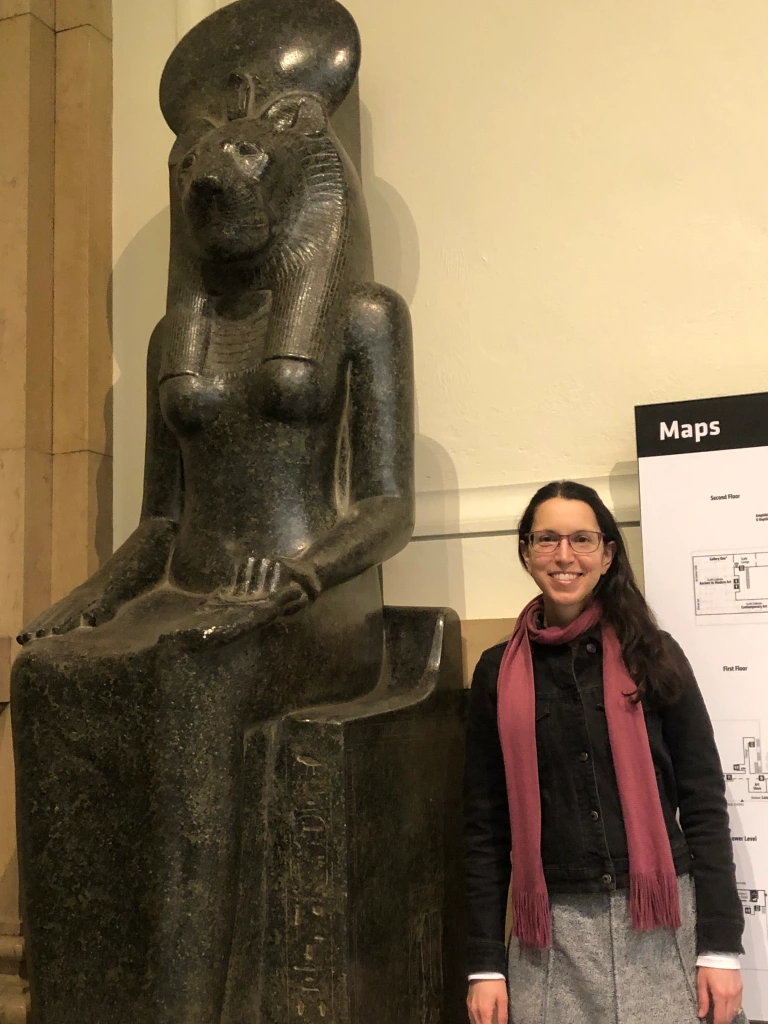
Don’t get me wrong: I’m a physicist, not a philosopher. I don’t have the training to undertake philosophy, and I have enough work to do in pursuit of my physics goals. But my high-school self would approve—that self is still me.
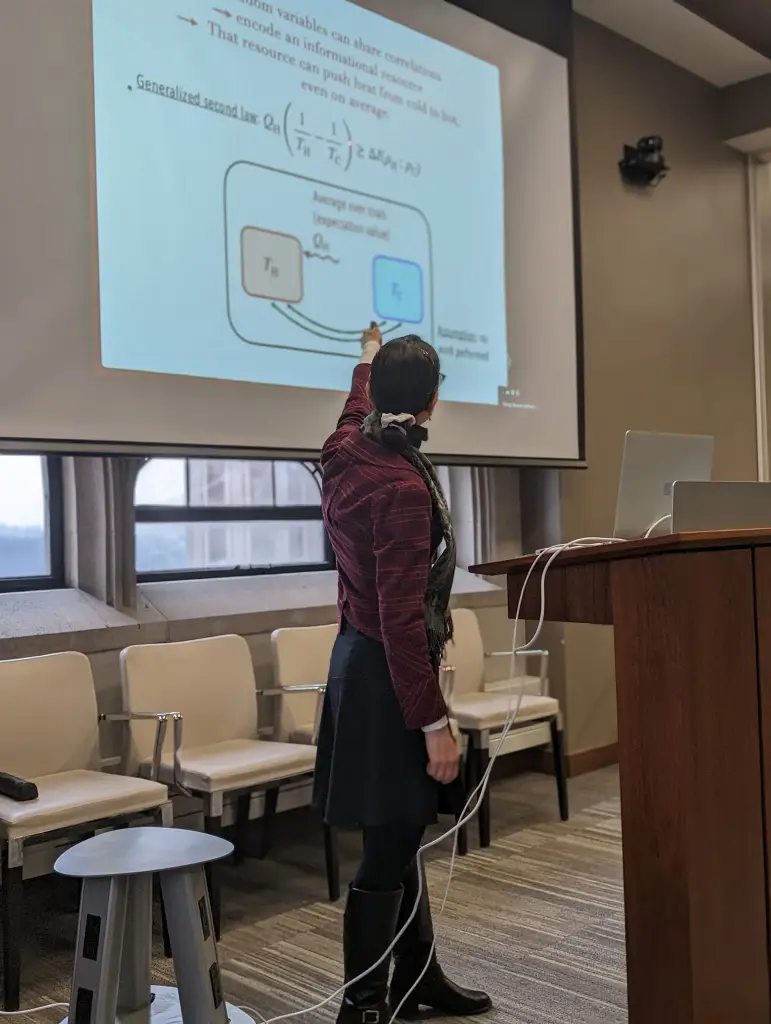
Comments